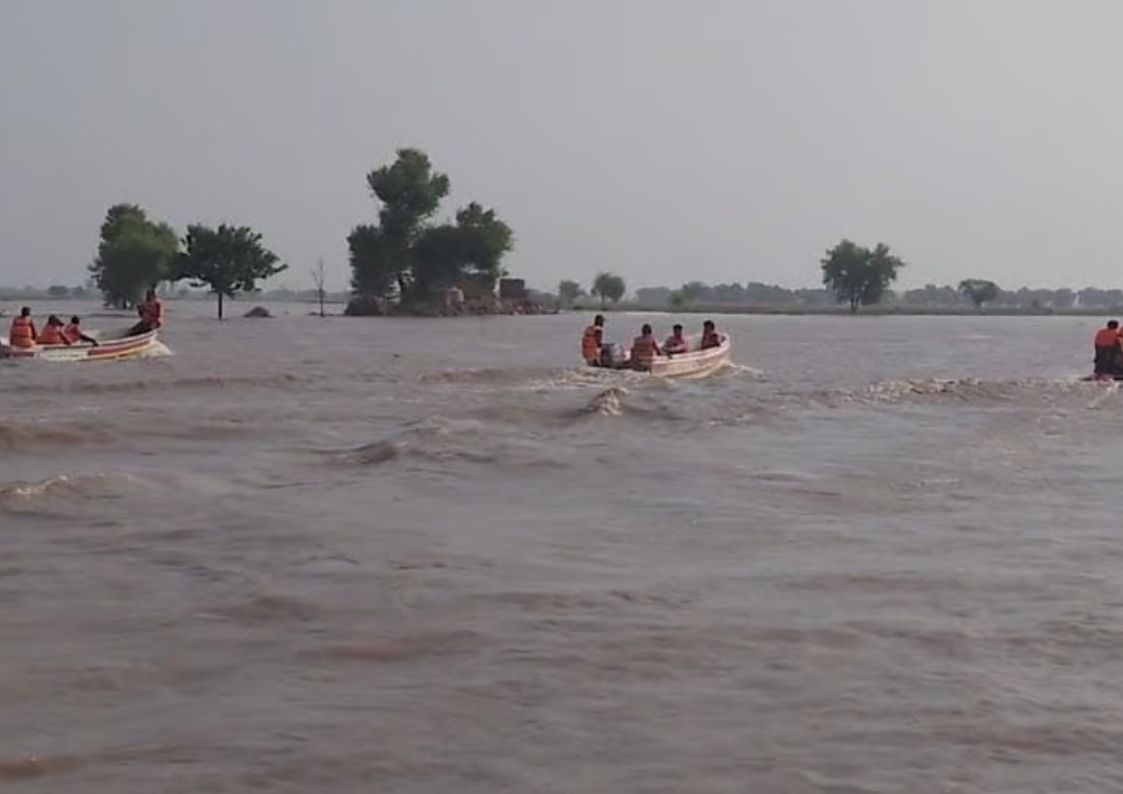HYDERABAD, Pakistan: As floodwaters continue to rise along the banks of the mighty Indus, the people of the katcha areas between Hyderabad and Matiari remain unshaken. For them, floods are not just disasters to fear, but seasonal realities navigated with calm, resilience, and centuries-old knowledge passed down through generations.
While national media highlights displacement and destruction, life in the katcha tells a different story. Locals, like writer Zubair Hajjano, tend to their cattle and fields with composure, echoing a mindset deeply rooted in tradition: “Pani aaye ga tu dekhen gey” — “We’ll worry once the water comes.”
Here, nature itself serves as a warning system. Communities read the river’s behaviour through natural and manmade signs. Stones, wooden markers, and the local Chandhan drains reveal the pace of rising waters. Indigenous plants such as devi act as flood indicators, while each dawn brings fresh assessment of danger or safety.
For residents like Chakar Chalgari and Ahmed Ali Chalgari, August carries special weight—it is the month when floods usually test the land’s fertility and the community’s preparedness. Yet, their trust in ancestral methods offers them a sense of control that modern technology often fails to provide.
The story of the katcha is not merely one of survival. It is about coexistence with the river, where floodwaters, though feared, also bring renewal to the soil, enriching fertility for the coming seasons. In this balance between flood and fertility, footprints of resilience continue to guide the path forward.
This story has been reported by PakTribune. All rights reserved.



